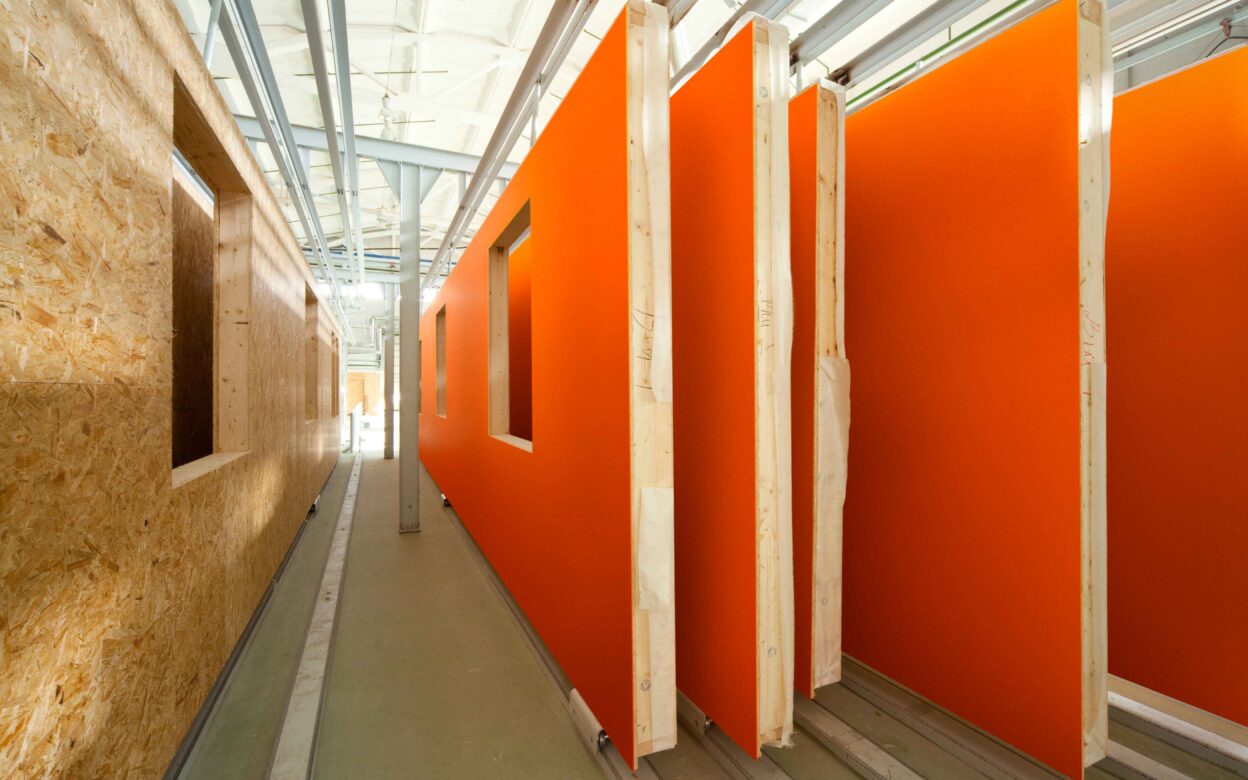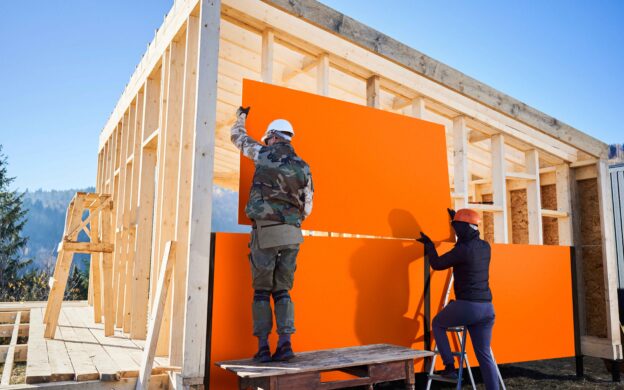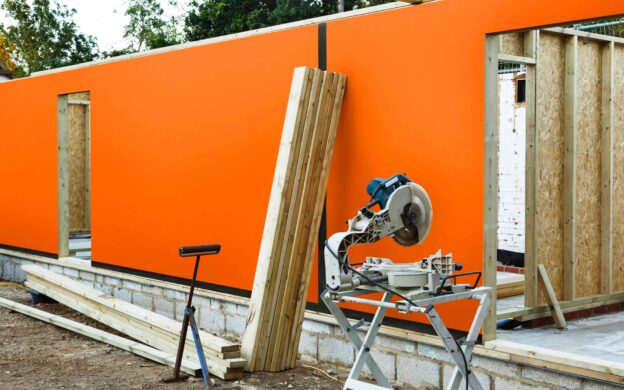
The flakes are shredded from mainly spruce or pine logs, including forest thinning that tend to have no other use. Manufactured in four different grades, OSB has a range of applications from internal fit out to exterior heavy-duty loadbearing conditions. It is stronger and heavier than both plywood and MDF, and its production generates very little waste.
The dried timber strands used in OSB are coated with a moisture-resistant binder, then cured under heat and pressure to produce finished boards. The binder gives a manufactured ‘OSB board’ moisture resistance, but it cannot be considered waterproof. Moisture content more than 20% may cause OSB to fail, so some form of treatment is required where boards will be exposed to rain.
What are the four grades of OSB?
OSB boards are defined by, and classified in accordance with, BS EN 300:2006. The four grades are simply numbered 1 to 4, written as OSB1, OSB2, OSB3 and OSB4 (though sometimes seen as OSB/1, OSB/2 etc.).
- OSB1 classification covers general purpose boards and boards for interior fit-out (including for furniture) and is suitable for dry conditions only.
- Boards classified as OSB2 are load bearing, also for use in dry conditions only.
- OSB3 is the classification of board most used in the construction industry, being a loadbearing board that can be used in humid conditions.
- Heavy-duty loadbearing boards suitable for humid conditions are classified as OSB4.
What grade of OSB board is used in timber frame housebuilding?
Structural insulated panels (SIPs) and roof and wall cassette solutions feature layers of OSB sandwiching a timber stud or framework. They are delivered to site ready to install, making homes much quicker to erect compared to traditional brick and block masonry construction.
As loadbearing elements exposed to the weather, cassettes and panels typically use OSB3 – though they may use OSB4 if the house design and loading conditions require it. Neither grade of OSB can be left exposed. A light rain shower is tolerable, but prolonged heavy rain is not.

Timber frame housebuilding might be a faster construction method, but it is still subject to the unpredictable British weather. Timber framed housing can be wrapped in more traditional housewraps for added protection and to provide a breathable membrane.
Housewrap products themselves can only be left exposed to the elements for so long and are at risk of ripping and tearing when nailed/stapled, and in strong winds. They add an extra step to the installation process and must be carefully detailed around door and window openings.
To overcome these potential shortcomings, OSB and timber product manufacturers can instead opt for Arctek® Dryshell™. Arctek® Dryshell™ is a factory-applied overlay that ‘fuses’ to OSB, enhancing the water resistance of the board by creating a reliable and effective moisture and vapour barrier. Panels and cassettes are delivered to site with the overlay in place, saving the housebuilder the time and cost of installing a housewrap on site, as well as avoiding any of the potential risks associated with a flexible housewrap.
As Arctek® Dryshell™ is integral to the OSB, there is no risk of rips or tears. With joints taped moisture cannot enter and become trapped within the timber frame system. The continuous nature of the overlay maintains the structural stability of the OSB outer layers, delivers consistent vapour control, and offers better prevention of air leakage.
Housebuilders can be assured that their chosen panel or cassette system will be unaffected by weather and will deliver the intended energy efficiency once installed, contributing to a warm and comfortable home for residents to enjoy.
To find out more about how Arctek® Dryshell™ can benefit your timber frame projects, request a sample or contact us with an enquiry about how your OSB products can benefit.


